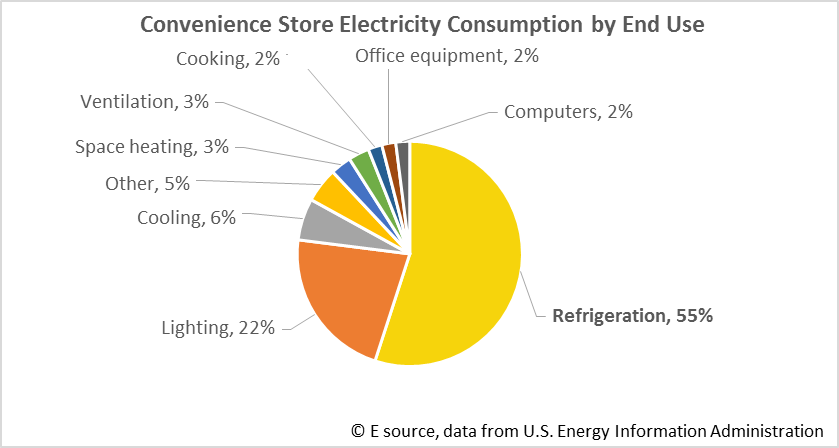NEEP: Measuring Energy Savings from Commercial Refrigeration Retrofits
New empirical evidence from a Cadmus study shows commercial refrigeration measures could be the new low-hanging fruit.
Northeast Energy Efficiency Partnerships (NEEP) is a nonprofit with a mission to serve the Northeast and Mid-Atlantic regions by accelerating energy efficiency in the building sector through public policy, program strategies, and education. NEEP achieves this by bringing stakeholders together to overcome policy, market, and institutional barriers to energy efficiency.
Challenge
Refrigeration is the #1 electricity end-use for grocery and convenience stores, making up more than 50 percent of electricity costs. Historically, however, direct install programs have focused primarily on cost-effective lighting retrofits, leaving refrigeration measures out in the cold.
On behalf of NEEP’s Evaluation, Measurement, and Verification (EM&V) Forum membership, NEEP, Cadmus, and the Demand Management Institute (DMI) conducted a multi-state pre- and post-installation study of the performance of common refrigeration retrofit measures to provide empirical evidence of their impacts on energy and demand.
Solution
Through primary and secondary data collection and analysis of 59 sites in the Northeast, Cadmus and DMI developed hourly demand savings estimates (savings loadshapes) for three commercial refrigeration measures:
- Electronically commutated motor (ECM) retrofits
- Evaporator fan controls
- Anti-sweat door heater (ASDH) controls
The evaluation team used these loadshapes to calculate key savings metrics, including annual energy savings and demand savings during peak periods. The evaluation team also created a loadshape calculation tool, which enables users to select whether to include interactive refrigeration savings, determine if the refrigerated case is a cooler or freezer, and compute the savings for any specific period of interest throughout the year.
For each of the three measures, the evaluation team computed cooling savings with interactive refrigeration effects, presenting the annual energy savings with and without interactive refrigeration savings for all evaporator fan motor measures so that program administrators can track the horsepower of installed motors and use the reported savings as a multiplier.
Results
The evaluation team identified the following key findings through its research:
- All three measures provide both energy and peak demand savings.
- The evaluated operating parameters and savings results for all measures are similar to some of the values currently estimated in the PAs TRMs.
- All three measures are unobtrusive and provide reliable savings. There is minimal opportunity for interference from the customer that could impact performance.
- The measures have a wide range of commercial applications: the evaluation team observed measure installations in coolers and freezers, walk-in spaces, and reach-in cases. The team also observed measure installations across variety of commercial building types, including small businesses and large commercial facilities alike.
- The evaluation team observed negligible differences (<1 percent) in measure performance based on weather. There is therefore no reason for different performance expectation based on geographic region.
As of January 2016, the results of this study have helped at least one program administrator identify updates to their current savings claims.
“NEEP commends the Cadmus team on their excellent overall performance on the regional commercial refrigeration loadshape study, including the high quality presentations and presentation materials, the calculation tool as well as the research itself. Their study helped demonstrate the reliable savings available from ubiquitous refrigerator and freezer cases throughout the Northeast region.”
– NEEP

